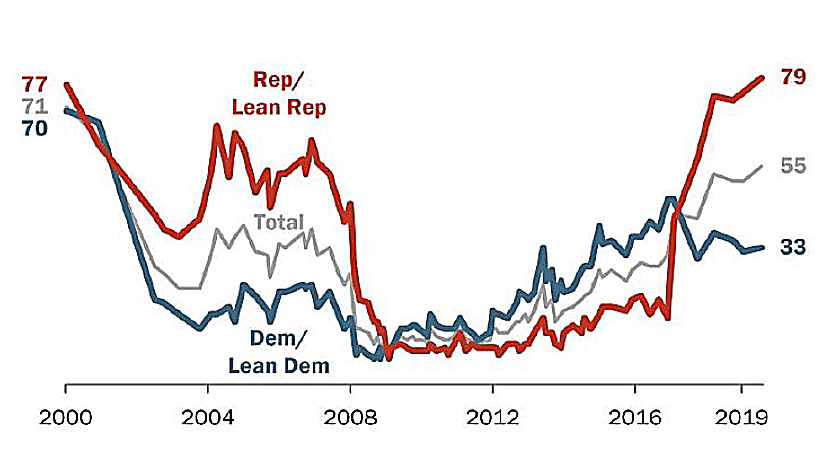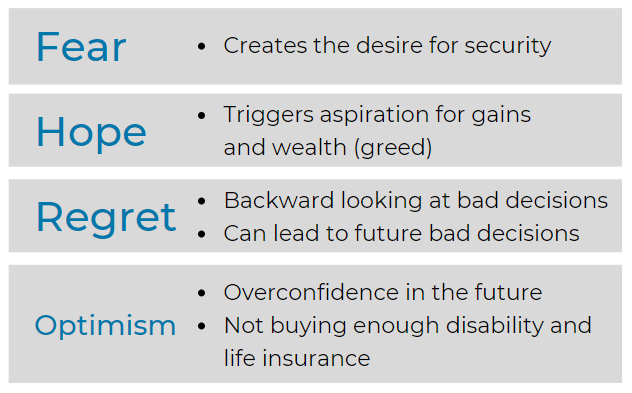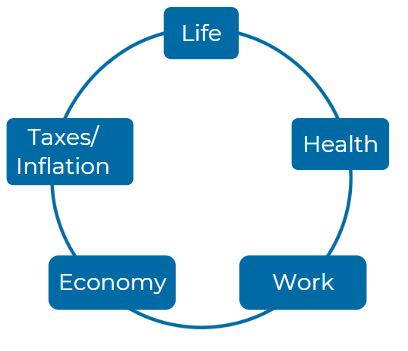Healthcare Provider Update: Intel's Healthcare Provider and Upcoming Costs Intel primarily utilizes benefits through various healthcare providers, with many employees accessing plans from major insurers like UnitedHealthcare, Anthem Blue Cross Blue Shield, and others depending on geographical region and specific plan offerings. As we look ahead to 2026, healthcare costs are anticipated to rise significantly, potentially impacting Intel employees and their families. With ACA premium hikes exceeding 60% in some states and the expiration of enhanced federal subsidies looming, many individuals could see their premiums increase by over 75%. Additionally, a rising trend in medical expenses, driven by inflation and supply chain challenges, coupled with escalating pharmaceutical costs, threatens to further strain household budgets. Consequently, these developments necessitate strategic planning by Intel employees to alleviate the financial burden associated with healthcare coverage in the coming year. Click here to learn more
Featured Video
Articles you may find interesting:
- Corporate Employees: 8 Factors When Choosing a Mutual Fund
- Use of Escrow Accounts: Divorce
- Medicare Open Enrollment for Corporate Employees: Cost Changes in 2024!
- Stages of Retirement for Corporate Employees
- 7 Things to Consider Before Leaving Your Company
- How Are Workers Impacted by Inflation & Rising Interest Rates?
- Lump-Sum vs Annuity and Rising Interest Rates
- Internal Revenue Code Section 409A (Governing Nonqualified Deferred Compensation Plans)
- Corporate Employees: Do NOT Believe These 6 Retirement Myths!
- 401K, Social Security, Pension – How to Maximize Your Options
- Have You Looked at Your 401(k) Plan Recently?
- 11 Questions You Should Ask Yourself When Planning for Retirement
- Worst Month of Layoffs In Over a Year!
- Corporate Employees: 8 Factors When Choosing a Mutual Fund
- Use of Escrow Accounts: Divorce
- Medicare Open Enrollment for Corporate Employees: Cost Changes in 2024!
- Stages of Retirement for Corporate Employees
- 7 Things to Consider Before Leaving Your Company
- How Are Workers Impacted by Inflation & Rising Interest Rates?
- Lump-Sum vs Annuity and Rising Interest Rates
- Internal Revenue Code Section 409A (Governing Nonqualified Deferred Compensation Plans)
- Corporate Employees: Do NOT Believe These 6 Retirement Myths!
- 401K, Social Security, Pension – How to Maximize Your Options
- Have You Looked at Your 401(k) Plan Recently?
- 11 Questions You Should Ask Yourself When Planning for Retirement
- Worst Month of Layoffs In Over a Year!
U.S. Initial Jobless Claims, Per Week

Total U.S. Nonfarm Payrolls

GDP Annualized Growth Rate

During the last 75.75 years (since 1945) there have been 190 declines of 5% or greater.

Sources: Standard & Poor’s Corporation; Copyright 2020 Crandall, Pierce & Company
The Market's Reaction to a Financial Crisis
Cumulative total return of a balanced strategy: 60% stocks, 40% bonds

Indices are not available for direct investment. Their performance does not reflect the expenses associated with the management of an actual portfolio. Past performance is not a guarantee of future results. Not to be construed as investment advice. Returns of model portfolios are based on back-tested model allocation mixes designed with the benefit of hindsight and do not represent actual investment performance. See the “Balanced Strategy Disclosure and Index Descriptions” pages in the Appendix for additional information.


data-hs-cos-general-type='widget' data-hs-cos-type='module'>
Consider these five Elements:
How does the Intel Pension Plan define the eligibility criteria for employees looking to retire, and what specific steps must they take to determine their benefit under the Intel Pension Plan?
Eligibility Criteria for Retirement: To be eligible for the Intel Pension Plan, employees must meet specific criteria, such as age and years of service. Benefits are calculated based on final average pay and years of service, and employees can determine their benefits by logging into their Fidelity NetBenefits account, where they can view their projected monthly benefit and explore different retirement dates(Intel_Pension_Plan_Dece…).
What are the implications of choosing between a lump-sum distribution and a monthly income from the Intel Pension Plan, and how can employees assess which option is best suited for their individual financial circumstances?
Lump-Sum vs. Monthly Income: Choosing between a lump-sum distribution and monthly income under the Intel Pension Plan depends on personal financial goals. A lump-sum provides flexibility but exposes retirees to market risk, while monthly payments offer consistent income. Employees should consider factors like their financial needs, life expectancy, and risk tolerance when deciding which option fits their situation(Intel_Pension_Plan_Dece…).
In what ways can changes in interest rates affect the lump-sum benefit calculation under the Intel Pension Plan, and why is it essential for employees to be proactive about their retirement planning concerning these fluctuations?
Interest Rates and Lump-Sum Calculations: Interest rates directly affect the lump-sum calculation, as higher rates reduce the present value of future payments, leading to a smaller lump-sum benefit. Therefore, it's crucial for employees to monitor interest rate trends when planning their retirement to avoid potential reductions in their lump-sum payout(Intel_Pension_Plan_Dece…).
How do factors like final average pay and years of service impact the pension benefits calculated under the Intel Pension Plan, and what resources are available for employees to estimate their potential benefits?
Impact of Final Average Pay and Years of Service: Pension benefits under the Intel Pension Plan are calculated using final average pay (highest-earning years) and years of service. Employees can use available tools, such as the Fidelity NetBenefits calculator, to estimate their potential pension based on these factors, giving them a clearer picture of their retirement income(Intel_Pension_Plan_Dece…).
How should employees approach their financial planning in light of their Intel Pension Plan benefits, and what role does risk tolerance play in deciding between a lump-sum payment and monthly income?
Financial Planning and Risk Tolerance: Employees should incorporate their pension plan benefits into broader financial planning. Those with a lower risk tolerance might prefer the steady income of monthly payments, while individuals willing to take investment risks might opt for the lump-sum payout. Balancing these decisions with other income sources is vital(Intel_Pension_Plan_Dece…).
What considerations should Intel employees evaluate regarding healthcare and insurance needs when transitioning into retirement, based on the guidelines established by the Intel Pension Plan?
Healthcare and Insurance Needs: Intel employees approaching retirement should carefully evaluate their healthcare options, including Medicare eligibility, private insurance, and the use of their SERMA accounts. Considering how healthcare costs fit into their retirement budget is crucial, as these costs will likely increase over time(Intel_Pension_Plan_Dece…).
How can employees maximize their benefits from the Intel Pension Plan by understanding the minimum pension benefit provision, and what steps can they take if their Retirement Contribution account falls short?
Maximizing Benefits with the Minimum Pension Provision: Employees can maximize their pension benefits by understanding the minimum pension benefit provision, which ensures that retirees receive a certain income even if their Retirement Contribution (RC) account balance is insufficient. Those whose RC accounts fall short will receive a benefit from the Minimum Pension Plan (MPP)(Intel_Pension_Plan_Dece…).
What resources does Intel offer to support employees in their retirement transition, including assessment tools and financial planning services tailored to those benefiting from the Intel Pension Plan?
Resources for Retirement Transition: Intel provides several resources to support employees' transition into retirement, including financial planning tools and access to Fidelity's retirement calculators. Employees can use these tools to run scenarios and determine the most beneficial pension options based on their financial goals(Intel_Pension_Plan_Dece…).
What strategies can retirees implement to manage taxes effectively when receiving payments from the Intel Pension Plan, and how do these strategies vary between lump-sum distributions and monthly income options?
Tax Strategies for Pension Payments: Managing taxes on pension payments requires strategic planning. Lump-sum distributions are often subject to immediate taxation, while monthly income is taxed as regular income. Retirees can explore tax-deferred accounts and other strategies to minimize their tax burden(Intel_Pension_Plan_Dece…).
How can employees of Intel contact Human Resources to get personalized assistance with their pension questions or concerns regarding the Intel Pension Plan, and what specific information should they be prepared to provide during this communication?
Contacting HR for Pension Assistance: Intel employees seeking assistance with their pension plan can contact HR for personalized support. It is recommended that they have their employee ID, retirement dates, and specific pension-related questions ready to expedite the process. HR can guide them through benefit calculations and options(Intel_Pension_Plan_Dece…).
/General/General%208.png?width=1280&height=853&name=General%208.png)



















-2.png?width=300&height=200&name=office-builing-main-lobby%20(52)-2.png)









.webp?width=300&height=200&name=office-builing-main-lobby%20(27).webp)


-2.png)









.webp)